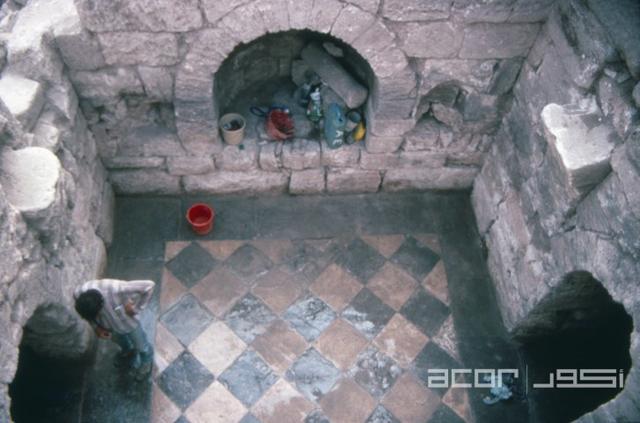You are here
Archaeological team works to place Abila of Decapolis on tourism map
By Saeb Rawashdeh - Dec 19,2017 - Last updated at Dec 19,2017

David Vila
AMMAN — Abila, an ancient site located 13km northeast of Irbid, which belonged to the ancient federation known as the Decapolis, is a matter of interest for American scholars who have been running the Abila Archaeological Project since 1980.
“Excavation thus far has demonstrated that Abila was a major Decapolis city with a long history of occupation,” said Professor David Vila from John Brown University (Arkansas), who specialises in the history of Christian-Muslims relations and Middle East regions.
“The earliest levels of occupation recorded date to the Early Bronze period [3200 BC] and we have found continuous occupation up to the Abbasid period [750-1100 AD],” he told The Jordan Times in a recent e-mail interview.
“One of the most important findings is the significant occupation during the early Islamic period,” Vila continued, noting that it has been found at other sites in Jordan, Israel and Syria, where early Islamic occupation continued into the 11th or 12th centuries AD.
“Earlier scholars used to claim that, after a major earthquake and the Abbasid revolution in the middle of the 8th century AD, northwest Jordan was deserted. Our evidence is showing that this was simply not the case,” he explained.
“To date, we have excavated or are in the process of excavating five Byzantine churches, a Byzantine monastic complex, a Roman bath complex, about 15km of water tunnels, an Early Bronze Age area, a Roman bridge and hundreds of tombs, dating from the Roman into the early Islamic period,” the archaeologist said.
The Byzantine monastic complex is still in the process of excavation and much remains to be done before definitive answers can be given to many questions, the scholar elaborated, adding that “it appears that it was still functioning in the 7th and 8th centuries, but not much can be known until further excavation is done”.
“The population there remained fairly stable through the early Islamic periods. In 749AD, a major earthquake destroyed most of the buildings from Damascus all the way down to Jerusalem, which caused the decline of the population.”
With the move of the caliphate to Baghdad after the Abbasid revolution in 750 AD, trade routes that once passed through the region also slowed down, he underlined, highlighting the light migration of peoples which meant that, by the 11th century, only a very small settlement at Abila remained before it was depopulated shortly thereafter.
Regarding the water system which at one point supplied around 15,000 inhabitants, it was quite extensive, claimed Vila.
The main source of water was Ain Qwelibah, which lies about 3km to the south of the centre of the city, with extensive water tunnels from there to various parts of the city and possibly even over to Umm Qais, he elaborated.
“There are also dozens of cisterns located throughout the site where water was collected from the roofs of most of the major structures,” Vila highlighted.
In antiquity as it is today, water was a precious commodity in the region and ancient people were proficient in moving, collecting and storing water to survive in times of shortage, he added.
“With Gadara/Um Qais just down the road, numbers of museums and restaurants in nearby Irbid, we are hopeful that Abila will become a significant tourist destination in the near future,” the archaeologist said, noting that it will benefit the economic development of northern Jordan.
“Our current plan is to continue working in excavation, conservation and restoration and in preparing the site for tourism,” Vila underlined.
Related Articles
AMMAN — Next year will mark 42 years of excavations carried out at the archaeological site of Abila, also known as Tel Abila, which belonged
AMMAN — The ancient city of Gadara (modern Umm Qais) was developed during the Hellenistic and Roman eras and was part of the Decapolis
IRBID — Ancient Abila, located about 12km northeast of Irbid, is a case study for scholars who want to track pilgrim itineraries in the Late



















